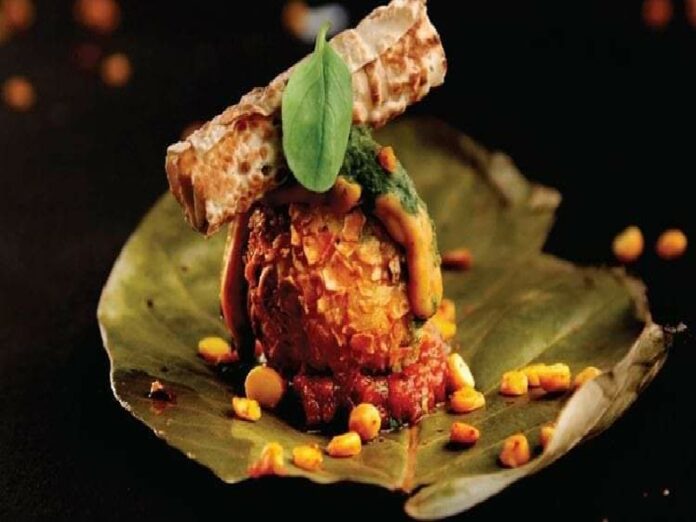Few decades ago, if someone brought up the idea of making ice cream with the flavour of Bottle Gourd, not only would it have sounded completely absurd, but it would also have been a very challenging recipe. We waited a long time until modern Indian cuisine stepped in, and incarnated such presumably foul tasting food combinations beyond imagination.
We cannot deny the fact that the modern variation of Indian cuisine took the popularity of Indian food to new heights, mostly outside India. Celebrity Chefs like Gagan Anand and Manish Mehrotra are some of the top pioneers who rid India of its curry stereotype, by introducing many innovative delicacies and cooking techniques. Some examples of these are- galouti burger, wild mushroom kulcha, coriander pesto, papdi chaat nachos, blue cheese naan etc.
This concept might take some foodies back to their childhood where they would mix tomato ketchup with dal or eat Maggi with roti. As ridiculous as it must’ve looked those days, such unorthodox fusion is the backbone of modern Indian cuisine, which is, quite unsurprisingly, criticized by many at the same time. Critics are fearful of this wave, as they are of the belief that this might change the authentic taste of Indian food, forever.
Certainly, this is not about the chaat of Delhi versus that of Benaras or the kebabs of Delhi versus those of Lucknow. This is about the very existence of traditional Indian delicacies, of which almost all now have reinvented yet largely identical famous counterparts. In simpler words, contrary to what some chefs believe, it wouldn’t be wrong to refer to this cuisine as westernized Indian cuisine or desi western cuisine.
Over the years, European food has struggled to make space in the plates of lower middle class Indians, who are very particular about the food they eat and its taste. They not only find it too bland to eat but also relate it with luxury, as it separates them from the upper class of the society.
It is extremely unfortunate that no efforts were made to bring this taste to the less financially well off sections. The industry gravitated only towards the upper class of society, who wanted to eat the gourmet, like gourmet. This class understood the masala in a curry as well as it understood the pungency in blue veined Gorgonzola and the sharpness in Parmigiano Reggiano.
Where in Europe the Indian food was not getting the love it had been receiving in India, on the contrary, it was said to be harmful for the digestive system of the Europeans and too spicy to eat due to antithetical eating habits. Between this tussle of Indian and European food, one was too bland so the other too spicy to eat. In order to balance it out, many Indian chefs stepped in and molded Indian cuisine with European flavors. This turned out to be a win-win for both European and Indian taste-buds, and is how the Indian food got new recognition all over the world.
How modern Indian cuisine was welcomed in India can be speculated based on the popularity of modern Indian cuisine restaurants like- Farzi Cafe, Masala Library and Indian Accent. As the name suggests, the techniques used in modern Indian cuisine are also quite advanced, seeming no less in complexity than a chemical lab experiment.
Chef Taru Gupta, who has worked with Farzi Cafe, a popular modern Indian cuisine restaurant and Bar based in Delhi, London, Dubai, Riyadh and many other cities worldwide, says, “These days kitchens are not limited to the traditional setup anymore, they are a lot more advanced. Our presentation techniques include the use of dry ice, sodium alginate, liquid nitrogen, lecithin, etc. to give our guests a mind-blowing gastronomic experience. Modern Indian cuisine requires the right science and plating to balance out the strong flavors in order to keep the harmony between Indian and western food.”
Modern Indian cuisine is undoubtedly building the bridge between the Europeans who could not understand Indian food more than Butter Chicken and Naan, and the Indians who could never get ahead of Pasta and Pizza. Somewhere between this tussle lie the authentic Indian dishes which may not generate more revenue when compared with their indo-western siblings but still rule over the tongues and plates of middle class Indians. #KhabarLive #hydnews







